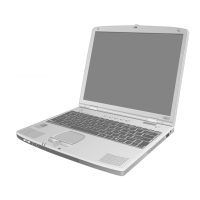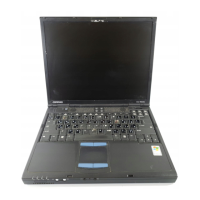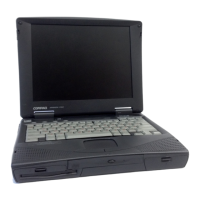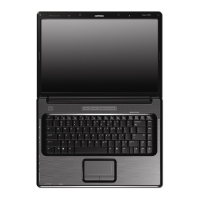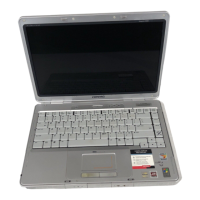Parity: When the Parity feature is enabled, the controller checks the
parity of received data from the SCSI-2 bus. The controller
always generates parity when transmitting data onto the SCSI-2
bus.
Disconnect: When the Disconnect feature is enabled, the controller
overlaps communications across the SCSI-2 bus. The controller
can request operation from multiple SCSI-2 devices in
parallel, increasing overall bus performance. If Disconnect is
disabled or a SCSI-2 device does not support this mode, the
controller then communicates with only one device at a time.
Synchronous
Negotiation: When the Synchronous Negotiation feature is enabled, the
controller uses the SCSI-2 synchronous data transfer mode to
communicate with peripheral devices supporting this mode of
data transfer across the SCSI-2 bus. The effect is to improve
overall throughput performance on the SCSI-2 bus. If
Synchronous Negotiation is disabled, Asynchronous mode is used
for all data transfers.
Hardware Configuration
Table F-2 lists the default hardware configuration. To change the
input/output (I/O) address and the Interrupt Level, run Computer Setup
(Section 6.7).
Table F-2. Hardware Configuration
===========================================================================
Parameter Default Value Alternate Value
===========================================================================
I/O Address 340 to 35Eh 140 to 15Eh
Interrupt Level IRQ 11 IRQ 10
Connector Type SCSI-2
Data Transfer Type 16-bit PIO
(DMA not supported)
===========================================================================
F.4 Installing An Internal SCSI-2 Drive
This section covers installation procedures for an internal SCSI-2 drive in
the Compaq SmartStation.
NOTE: Prior to installing the drive, refer to the SCSI- 2 drive
manufacturer's instructions to verify the parity, termination, and
SCSI ID of the drive and to obtain additional installation
information.
The SCSI-2 signal cable included with the expansion base supports a SCSI-2
drive in drive position 2 only. The steps to install the drive are
basically the same as those for installing a non-SCSI drive.
To install a SCSI-2 drive, complete the following steps:
